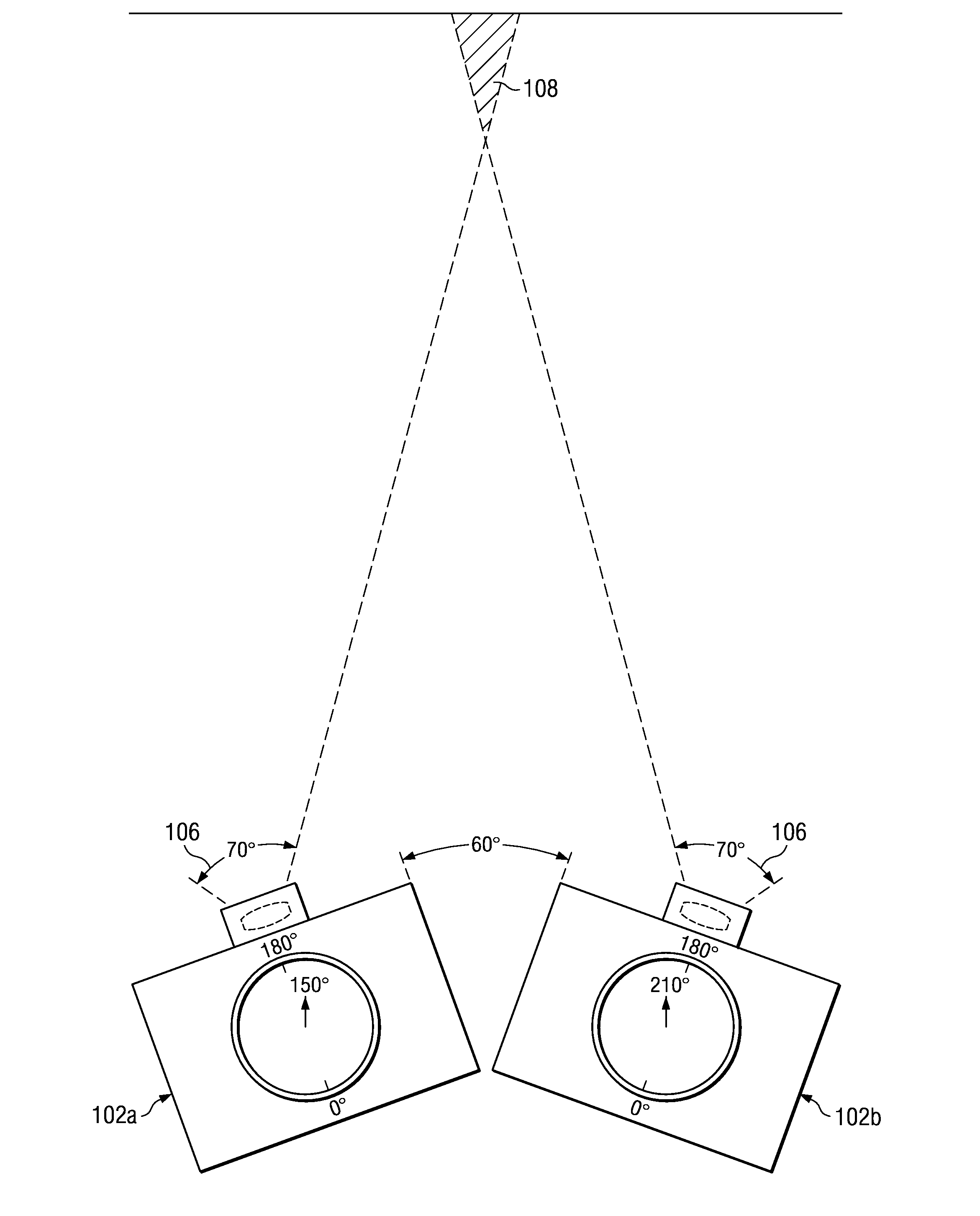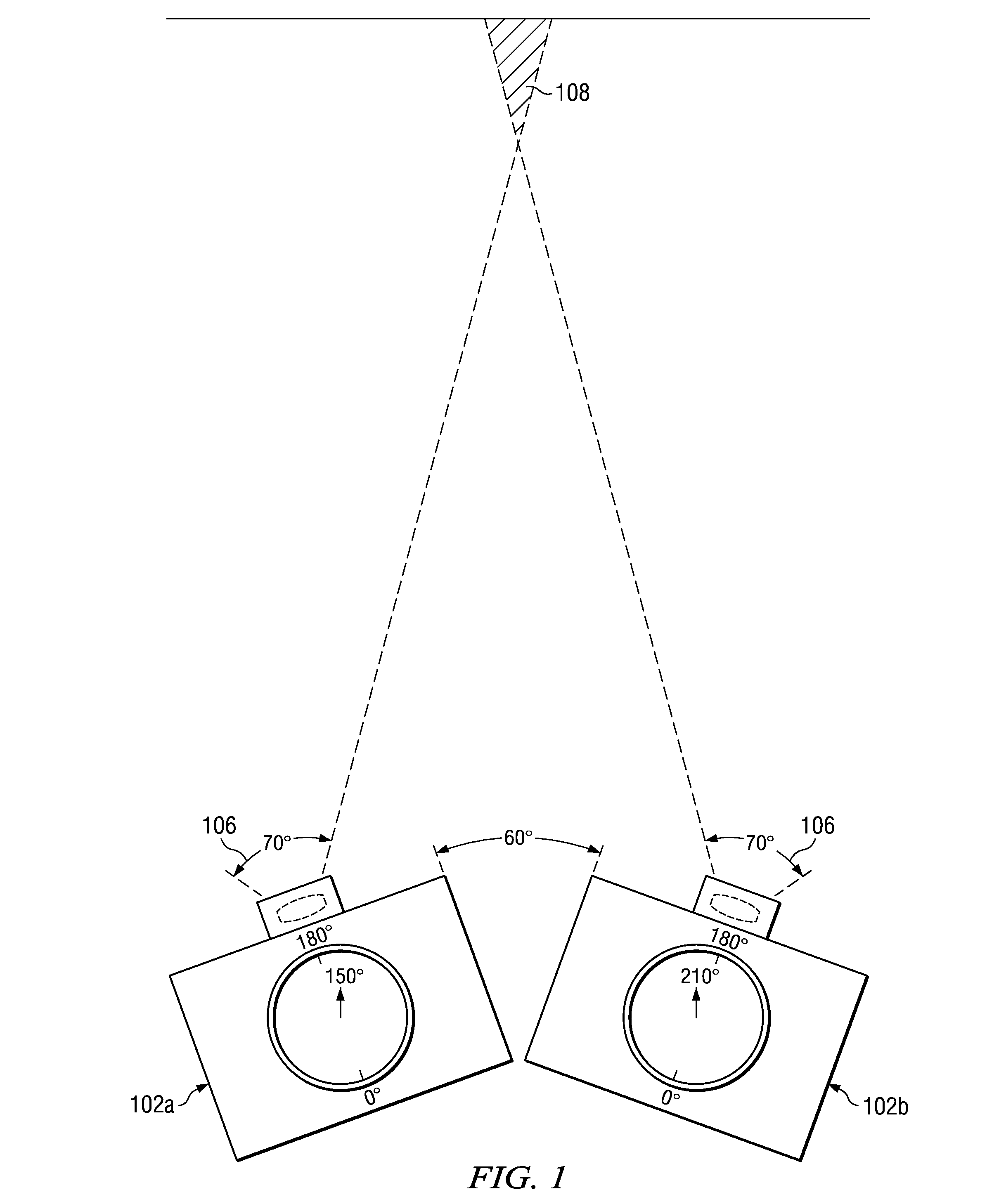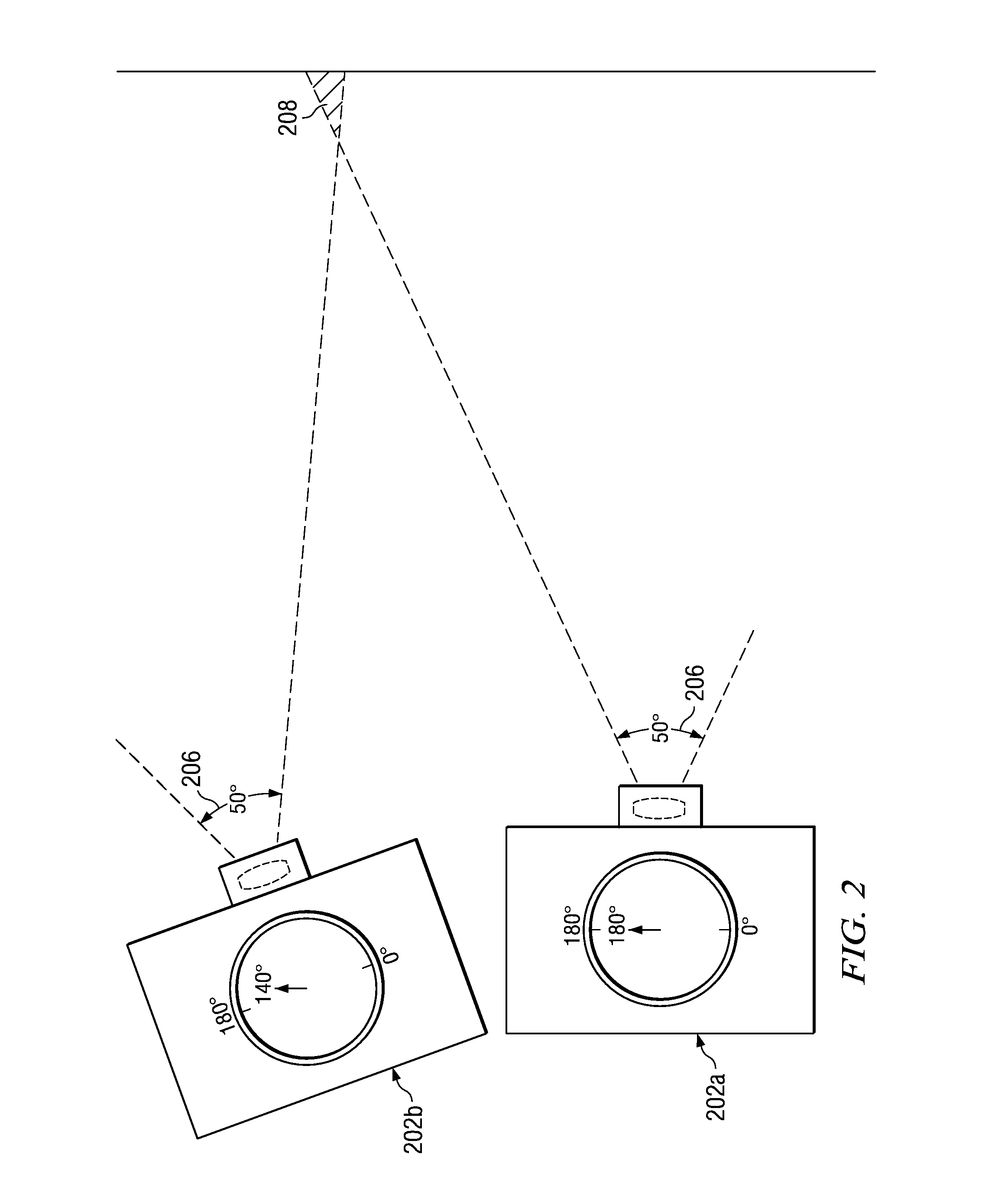Camera for panoramic photography
a panoramic and camera technology, applied in the field of photography, can solve the problems of loss of detail compared to a standard image, slowing the overall capture of multiple images, etc., and achieve the effect of simplifying the capture of a panoramic imag
- Summary
- Abstract
- Description
- Claims
- Application Information
AI Technical Summary
Benefits of technology
Problems solved by technology
Method used
Image
Examples
Embodiment Construction
[0020]As shown in FIG. 1, camera 102A, representing camera 102 in a first position A, has a first horizontal azimuth angle corresponding to the first of a multiplicity of images to be captured to generate a horizontal panoramic image. Presume, for example, the horizontal field of view 106 of camera 102 is 70 degrees, and further presume that 10 degrees of overlap is desired between adjacent images. Azimuth angle sensor 104 comprises an electronic compass, a differential azimuth angle sensor such as a turn rate sensor, or other known azimuth angle sensor. The azimuth angle value at the time of first image capture is 150 degrees, for example, and is stored as a starting reference. As camera 102 is rotated to azimuth angle as shown in 102B, the azimuth angle value changes to 210 degrees, at which time the shutter is automatically activated, capturing the second or subsequent image which typically overlaps the prior image as shown by overlap 108.
[0021]As shown in FIG. 2, camera 202A, re...
PUM
 Login to View More
Login to View More Abstract
Description
Claims
Application Information
 Login to View More
Login to View More - R&D
- Intellectual Property
- Life Sciences
- Materials
- Tech Scout
- Unparalleled Data Quality
- Higher Quality Content
- 60% Fewer Hallucinations
Browse by: Latest US Patents, China's latest patents, Technical Efficacy Thesaurus, Application Domain, Technology Topic, Popular Technical Reports.
© 2025 PatSnap. All rights reserved.Legal|Privacy policy|Modern Slavery Act Transparency Statement|Sitemap|About US| Contact US: help@patsnap.com



